The content of the article
How to get rid of wireworm in the garden? This question excites many summer residents. The pest gladly holes in beets, carrots, potatoes. He does not disdain corn and barley.
The fight against him is complex. All methods are divided into two types: agricultural and chemical. On the net you can find the most extraordinary ways. Some are in doubt, so let's get it right.
Agrotechnical measures
Compliance with crop rotation. Every year, transfer the planting to another place, while returning to the old one no earlier than after 4 seasons. Well, if the area of the site allows you to do this. But some gardeners are forced to plant, for example, potatoes for many years in a row in the same place.
The life cycle of the nutcracker is 5 years. Of these, 4 years he is the larva, the very wireworm. Therefore, the method works only with a five-year crop rotation.
Humidity. The wireworm loves moisture in the soil. With its lack, the larvae die. Well, yes, in the dry summer of 2010 almost all summer residents of the country complained about him. And only those who had the opportunity to constantly water their plantings did not see this nasty worm in their eyes.
Accordingly, the larvae love dry soil. With normal humidity, the wireworm cannot always find food. And with increased, he loses the ability to move and suffocates.
Hence the conclusion - throw all your strength into normal watering. Otherwise, you will again collect the remains of perforated root crops.
Weeding. Very often you can see this picture: beautiful well-kept gardens, and on the between them there are thickets of wheatgrass, burdock, and sow thistle. And then the owners complain about the inefficiency of the weeding method. They say that they have a clean garden, and the wire is raging.
Keep clean not only the beds, but also the stitches between them and adjacent sections. Remove wheat grass, mugs and thistles. If you need a grassy border between gardens, then inoculate it with clover or lupine. The wireworm does not tolerate them. Because on their roots live huge colonies of nodule bacteria producing nitrogen. And the larvae do not like mineral salts and fertilizers.
Joint landing. It is for the above reason that it is recommended to plant legumes in one hole with potatoes. Of course, on a large area, this is problematic. But in a small area, everyone is quite capable of it. At the same time, saving footprint.
It’s only important to remember: if potatoes will be processed with insecticides, then green legumes of whole legumes cannot be eaten entirely. But ripe beans, peas or beans are quite suitable for food after peeling.
If you still fear that you will be full of poison, then leave the crop for joint planting for next year.
Traps. The most effective method of disposal. But very labor intensive. Although, you need your crop whole? Without damage, rot, holes? Then proceed:
- Throughout the garden season, barley or corn seeds are planted on the affected area. For each one hundredth, 9-12 holes are dug with a depth of not more than 5 cm. 16-18 grains soaked in an insecticide are laid on the bottom. Sprinkle with earth. As soon as the first sprouts appear, they dig out the contents of the hole, they are surprised at the number of larvae. Then taken out of the site and burned. Because crushing a dense larva is very difficult. If you are not squeamish, you can tear each in half with your fingers.
- They arrange the same holes, but instead of grains they pour a handful of raw fresh manure or lush wet grass. Just do not sprinkle with earth, but cover with scraps of boards or pieces of slate. After 2 days, you can collect the "crop".
- Old root crops are cut in medium cubes, soaked in a solution of any insecticide for 2 hours. Then instill in the same wells as described above. It is not necessary to dig them out, because the wireworm eats up the poisoned treats and dies.
- If you are opposed to the use of chemicals on your site, then drop the root cubes without preliminary soaking. Then every 3 days you have to pick out the bait from the pits, take it out of the site. There it must be burned along with pests. So that they burn well, they are either thrown into a powerful bonfire or, as usual, doused with kerosene (gasoline) and set on fire.
- Put on a twig, stick or wire over a piece of root. Instill the structure to a depth of about 12 cm so that a visible tail remains on the surface. In a day or two, you can dig out the “good” and admire the vile guests.
- To lay strips of polyethylene or oilcloth on the beds, smeared with thick sugar syrup. Adult beetles and many other pests flock to such a bait. But they will not be able to peel off and run away. Only use this method in early spring or autumn, when there is no active summer of bees and bumblebees. Otherwise, they too will stick to the stripes in pursuit of sweets.
- Finely chopped root vegetables are placed in glass or plastic containers, a little liquid sugar syrup is poured. They add it to the site so that the neck of the container is at a depth of 1-1.5 cm below the soil level. Every day they check. Inside will be both wireworm larvae and beetles. You can not add syrup, then by all means take a bowl with a narrow neck, so that adults can not fly out.
Supplements when planted. Some substances are placed in the hole along with the tuber, which kill or deter the wireworm.
- Specialized soil. On the packaging it says “Protection”. It will take just a pinch. In this soil is a predatory nematode that does not harm club or other insects. But she loves to feast on the wireworm larvae. You can still pour such soil into the beds with a thin layer before sowing beet seeds and carrots. Sometimes a single application in 4 years is enough. Nematode destroys from 70 to 99% of larvae.
- Egg shell finely ground. Mix with fragrant sunflower oil in a ratio of 1 to 1. A dessert spoon is enough for one hole. Having tasted such a treat, the wireworm dies almost immediately.
- A handful of onion husks or dry citrus peels. Also introduced at boarding. According to reviews, it scares away many pests well.
- Dry needles of pine or spruce. Matchbox on one landing hole.
Salt. Simple kitchen salt. It is generously scattered on the surface of the earth, then harrowed. The wireworm leaves quickly from such soil. But you can repeat the procedure only after 7 years, not earlier. Otherwise, together with the pest, the lion's share of the crop will leave.
Digging. In the fall, after the onset of the first stable frosts, the soil is deeply plowed or dug. Pelvic larvae and adult individuals laying down for wintering will die from frost. At the same time, the processing depth should be at least 16-18 cm, otherwise there will be no use.
In the spring, immediately after thawing the land, but before the start of the main planting, it is recommended to dig the beds again, while large clods are carefully broken. Sunlight is disastrous for overwintered larvae. And the birds will pick up the rest.
Chemical measures
Liming. This nasty insect adores acidic soils. Therefore, they necessarily deoxidize the soil regularly. This may be the introduction of lime, chalk, dolomite flour, ash. Only ash should be from hardwood.
The legendary potassium permanganate. Before planting, they spill the soil with a warm pale pink solution. Cultivated plants can be planted and sown no earlier than a day after such treatment.
Early in the spring immediately after warming up the soil and in August, after harvesting, they do not wait until the pest crawls to other feeding places. Thoroughly spill the ground with a strong maroon solution, with a temperature of about 80 ° C. At the same time, pickle most of the pathogenic bacteria and pathogenic microbes.
Pre-planting treatment of tubers. They are sprayed with special long-acting drugs. Within 56-58 days there is protection from pests. After this period, the wireworm will again attack the landing. However, if during these two months you conducted other events, it is quite possible that there will simply be no one to devour the crop.
Mineral salts. The introduction of ammonium sulfate into the ground before planting. For 1 square. m. 16-18 g of fertilizer is enough. Spread evenly over the surface of the soil and close up with a plane cutter, rake or harrow. Subsequent watering or natural rain will allow the mineral salt to penetrate into the deeper layers. The larvae of such additives are very disliked. Can be replaced with ammonium nitrate. The dosage is identical.
There is a recipe that reviews also helps well. It is necessary to dilute in 10 l of water 2 ml of ammonia. With this solution, water the planting under the root. Up to half a liter per plant. Processing is carried out once a month.
Useful Tips
- Plant tagetes (marigolds) along the perimeter of the plot and, if possible, between the rows. Do not get rid of the larvae, but adult individuals bypass such beds side.
- Do not leave wireworm food in the winter. That is, remove absolutely the entire crop from the site. Many gardeners do not harvest small root crops, perhaps during the winter they will rot. It goes without saying, but before rotting they manage to feed a considerable number of larvae. Therefore, dig up even the smallest carrots and potatoes.
- Earth must not be empty. Look in nature, is there somewhere a bare patch of soil? Not. So your site after harvesting must be sown with green manure. Clovers, rye, white mustard help get rid of wireworms best of all. In the spring, all this stuff must be dug right with the stems and leaves. So you also get a good dose of natural organic fertilizer. At the same time, the nitrogen content in the soil will increase. After such an addition, the wireworm will sidestep your beds; nitrogen will not suit the larvae.
- If you have chickens in the farm, do not burn trapped worms. Give them to your birds, let them feast on.
Otherworldly forces
There is a recommendation to sprinkle the site with holy water or read conspiracies. Interesting tip. We do not detract from the importance of such procedures for those people who believe in their effectiveness. We simply call to recall the well-known folk wisdom: "Hope for God, but don’t lie yourself." Just spraying with holy water or abandoned words will not be enough if you sit down after that, with folded arms. You can wait for deliverance from adversity for a very long time, if you do nothing yourself.
How to get rid of wireworm in the garden? The most important thing is to observe the full range of activities for five years. Because having destroyed the first wave of larvae, you will be delighted and fold the handles. But they will be replaced by older individuals. Do not give up, and soon you can clear your garden of this unpleasant scourge.
Video: how to defeat the wireworm

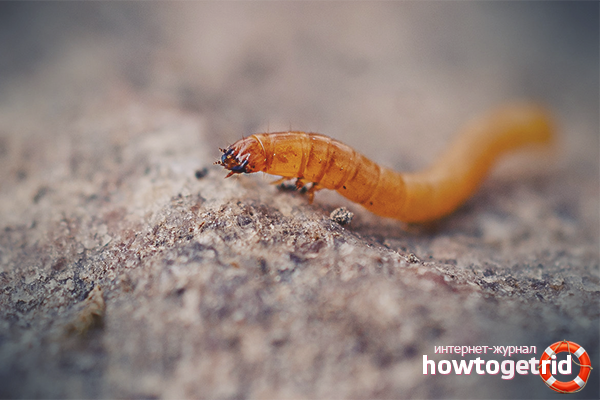

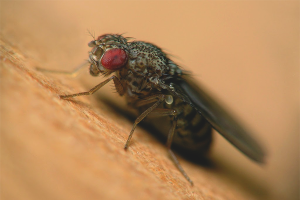
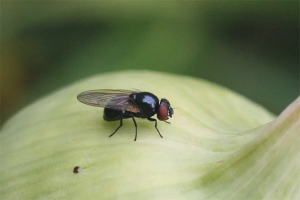
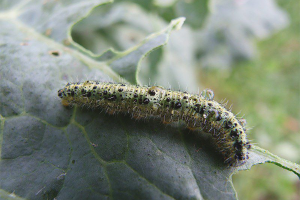
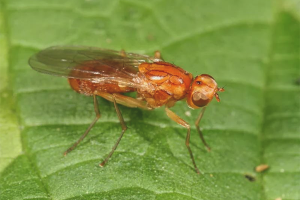

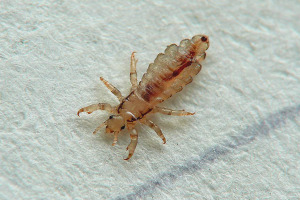
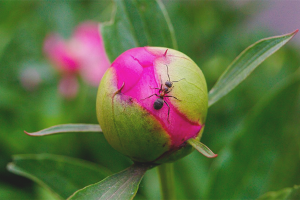
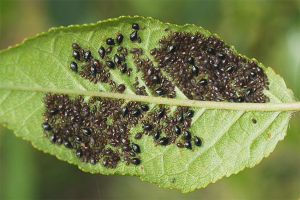
Submit